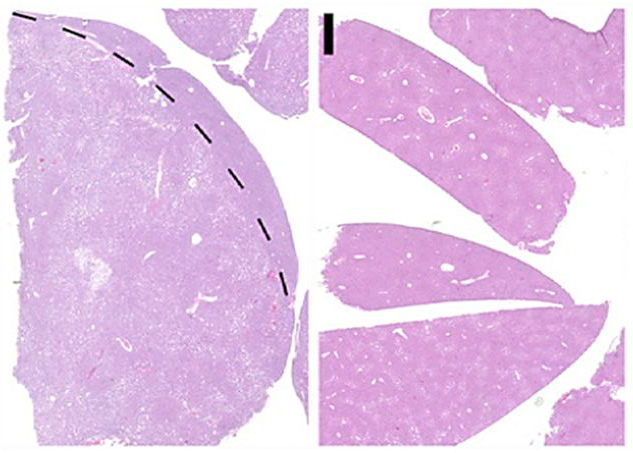13/09/2018
Print PageCell environment influences type of liver tumor
While progress in early detection and treatment has led to a reduction in mortality for many other types of cancer, there has been a dramatic increase in mortality among patients who have cancer within the liver. Especially fatty liver, which is becoming increasingly common in western countries, now leads to chronically pre-damaged livers in many patients, which are a risk factor for liver cancer. Strikingly, patients with the same predisposition or liver damaging risk factors either develop hepatocellular carcinoma or intrahepatic cholangiocellular carcinoma.
Both cancers are different regarding their behavior and are also treated differently. The microenvironment of cancer cells, and in particular, the special form of cell death occuring in this environment, proved to be decisive for the development of the respective type of cancer. The scientists showed that precursors of cancer cells in whose environment cells died by apoptosis, the classical cell death, developed into hepatocellular carcinoma. Precancerous cells, in whose environment cells died due to necroptosis, led to intrahepatic cholangiocellular carcinoma. In necroptosis, the cell membrane dissolves, and the cell content causes inflammation in the environment of the cancer cell, while in classical programmed cell death small vesicles are formed which are eliminated by the immune system.
The results could be verified both in mouse models and in human tissue samples. Cancer researcher Xin Wei Wang from the Laboratory of Human Carcinogenesis (Center for Cancer Research, National Cancer Institute, Bethesda, USA) contributed crucial human analysis data, and Oliver Bischof, a distinguished epigeneticists from the Institut Pasteur (Laboratory of Nuclear Organization and Oncogenesis) in Paris, unraveled how the microenvironment affects gene regulation in the cancer cell.
What do the findings mean for clinical practice? "Future research will have to investigate whether the direct cell environment affects not only the type of tumor development but also the therapy," says Professor Lars Zender. In the treatment of HCC with chemoembolization, it has already been observed that a part of the original liver cancer can turn into a bile duct carcinoma. This could be a reason why the cancer no longer responds to the original therapy. "We may be on the trail of a therapy resistance mechanism for liver cancer," explains the renowned oncologist and "we hope that the findings will inform novel therapeutic options in the future."
Originalpublikation:
Seehawer, M. et al. (2018). Necroptosis microenvironment determines lineage commitment in liver cancer. Published in: Nature, 12th September 2018. DOI:10.1038/s41586-018-0519-y
